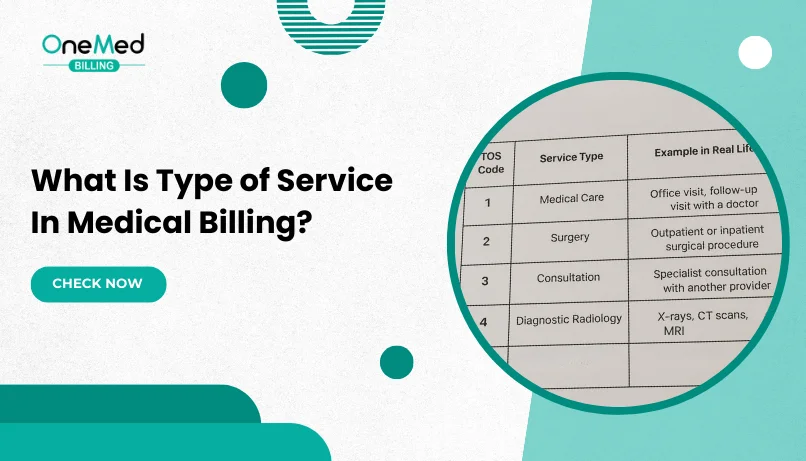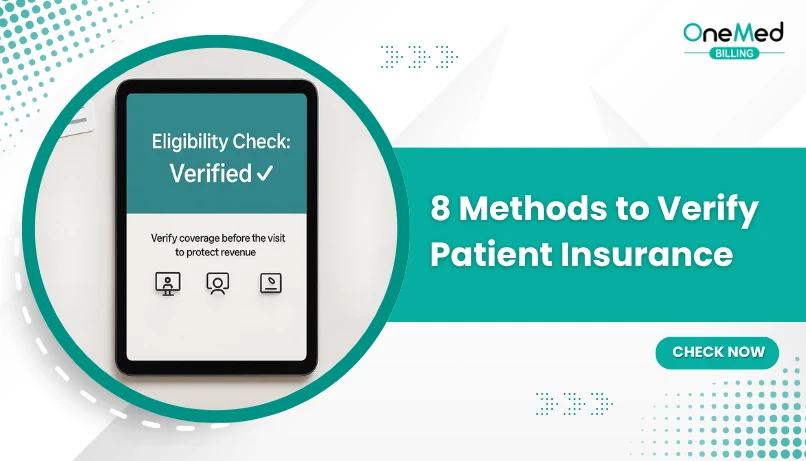What is Assignment Of Benefits (AOB) in Medical Billing?
- July 22, 2025
- 0 Comments
- Medical Billing
Assignment of Benefits (AOB) in medical billing is a signed agreement that lets healthcare providers receive payment directly from a patient’s insurance company. This means the insurance company pays the doctor or clinic instead of sending the money to the patient. It helps simplify billing and ensures providers get paid faster.
Healthcare billing comes with many important terms, and one of the most important is “Assignment of Benefits,” often called AOB. This is a term you will often hear if you work in healthcare or have insurance. But what does it really mean? And why is it important for both patients and providers?
In this guide, we will explain assignment of benefits in simple terms, how it works, why it matters, and what healthcare providers and patients should know about it.
What Does Assignment of Benefits Mean?
Assignment of Benefits (AOB) is a legal agreement where a patient allows their healthcare provider to directly receive payments from their insurance company for medical services.
In simple words, when a patient signs an AOB form, the insurance company sends the payment straight to the doctor or hospital instead of sending it to the patient.
Without AOB, the insurance company would pay the patient, and the patient would be responsible for paying the doctor. AOB simplifies this process by letting the provider handle payment collections directly.
How the Assignment of Benefits (AOB) Process Works
The Assignment of Benefits (AOB) process is a standard practice in healthcare billing that allows providers to receive payments directly from the insurance company on behalf of the patient. This avoids delays, improves cash flow, and reduces the administrative burden on patients.
Step 1: Patient Reviews and Signs the AOB Form
At the start of the appointment or during registration, the patient is given an AOB form to review. This document clearly states that:
- The patient authorizes their insurance company to send payment directly to the provider
- The provider will handle the claim submission process
- The patient is still responsible for any charges not covered by insurance
The form must include the patient’s personal details, insurance policy information, and a signature with the date. Without a valid AOB, the insurer will often send reimbursement to the patient instead of the provider, delaying payment.
Step 2: Provider Performs the Service
Once the form is signed, the provider delivers the scheduled healthcare service — whether it’s a consultation, diagnostic test, procedure, or therapy session. The provider documents:
- The nature of the service
- Any medical necessity notes
- Observations or results
These records are essential for accurate claim coding and for compliance with payer requirements.
Step 3: Provider Submits the Insurance Claim
After the service, the provider’s medical billing team or RCM partner prepares the insurance claim. This involves:
- Entering patient and provider details
- Applying correct CPT/HCPCS codes for services and ICD-10 codes for diagnoses
- Attaching the signed AOB form
- Including the total charges for the service
The claim is then sent electronically to the insurer through a billing software or clearinghouse to speed up processing.
Step 4: Insurance Company Reviews the Claim
Once received, the insurer checks:
- Eligibility – confirming the patient’s active coverage and benefits
- Medical necessity – ensuring the service is justified under the plan
- Coding accuracy – verifying codes match the service provided
- AOB validity – confirming the form is complete and signed
If any details are missing or incorrect, the insurer may request additional information or deny the claim, which could trigger denial management efforts.
Step 5: Insurance Pays the Provider Directly
If approved, the insurer issues payment directly to the provider rather than the patient. This shortens the payment cycle and reduces the risk of funds being misused or delayed. Providers receive an Explanation of Benefits (EOB) showing how the claim was processed, the amount paid, and any patient responsibility.
Step 6: Patient Pays Any Remaining Balance
After insurance payment, the provider bills the patient for any remaining costs, such as:
- Co-pays
- Deductibles
- Co-insurance
- Non-covered services
The provider may offer payment plans or discounts depending on the practice’s policy.
Why This Process Matters:
For providers, the AOB process reduces financial risk and improves revenue cycle efficiency. For patients, it eliminates the need to handle complex reimbursement paperwork and ensures providers get paid promptly without extra steps.
Example of Assignment of Benefits in Real Life
John goes to a chiropractor for back pain. His chiropractor does not work with his insurance company, so normally John would have to pay the full amount and wait for his insurance to pay him back. But John signs an Assignment of Benefits form. Now, the chiropractor sends the bill to the insurance company and gets paid directly. John only pays his small share, like the co-pay. This way, John does not have to handle the paperwork or wait for a refund.
Why is Assignment of Benefits Important?

Assignment of Benefits is important for several reasons:
- Simplifies Payment Process: Patients don’t have to wait for reimbursement and don’t need to pay the full amount upfront.
- Reduces Financial Burden on Patients: Patients only pay their part (like co-pays), and providers deal with insurance payments.
- Helps Providers Get Paid Faster: Providers do not have to chase payments from patients after insurance reimbursement.
- Improves Cash Flow for Clinics: Direct payments mean providers receive money faster, which helps with practice cash flow.
- Reduces Billing Errors: Providers submit claims directly, which reduces the chance of claim mistakes made by patients.
What Information is Included in an Assignment of Benefits Form?
A proper AOB form includes some important details to make it legally valid:
- Patient’s full name and contact information
- Provider’s details
- Insurance company information
- Description of the services covered
- Authorization statement allowing direct payment to the provider
- Patient’s signature and date
This form becomes part of the patient’s file and is used to process claims properly.
Can an Insurance Company Refuse Assignment of Benefits?

Yes, in some cases, insurance companies can refuse to honor an assignment of benefits. This depends on the insurance policy terms.
- Some policies do not allow AOB for out-of-network services.
- Certain insurers may have strict rules about when AOB applies.
- Even with AOB signed, insurers might pay patients directly in some situations.
This is why it is important for patients and providers to check the specific insurance policy details before assuming direct payment.
Pros and Cons of Assignment of Benefits
Benefits of AOB
- Direct payment to providers
- Faster reimbursement
- Less financial stress for patients
- Reduced billing confusion
- Easier claims management for healthcare staff
Disadvantages of AOB
- Insurance companies might delay payment
- Providers may still have to deal with claim denials
- Patients may not fully understand their financial responsibility
- Some insurers may ignore AOB and pay the patient directly
How AOB Helps Healthcare Providers
For healthcare providers, especially small practices, assignment of benefits can be very helpful:
- Improves cash flow by reducing delays in payments
- Saves staff time by reducing follow-ups with patients
- Simplifies the claims process since providers work directly with insurance
- Reduces bad debts since providers don’t have to rely on patients to pay after reimbursement.
AOB is a standard part of medical billing because it gives providers more control over their payment process.
How do Patients benefit from the Assignment of Benefits?

Patients also benefit from signing an AOB in several ways:
- They don’t have to worry about submitting claims to insurance
- They avoid waiting for reimbursement checks
- Payments are handled directly, making medical bills simpler
- They only need to focus on their share like deductibles or co-pays
However, it is always good for patients to review their Explanation of Benefits (EOB) from insurance companies to understand how much was paid and if any balance is due.
Conclusion
Assignment of benefits is a simple but powerful part of medical billing. It makes life easier for both healthcare providers and patients by allowing direct payments from insurance companies to providers. This reduces delays, simplifies paperwork, and improves cash flow for medical practices.
For patients, signing an AOB form means less hassle and fewer steps to receive care. For providers, it means smoother billing and quicker payments.
Frequently Asked Questions
Find quick answers to common questions about this topic, explained simply and clearly.
Can I cancel an Assignment of Benefits after signing it?
In most cases, AOB is valid for the treatment period mentioned. Patients can revoke it in writing if needed, but it may delay payments or cause billing issues.
Do I still owe money after signing the AOB?
Yes, patients are still responsible for deductibles, co-pays, and any non-covered services. AOB only allows direct insurance payment, it does not cancel patient responsibility.
Do all insurance companies accept AOB?
Most major insurers accept AOB, especially for in-network care. Some plans, especially certain employer-based or out-of-network policies, may have restrictions.







Comments (0)